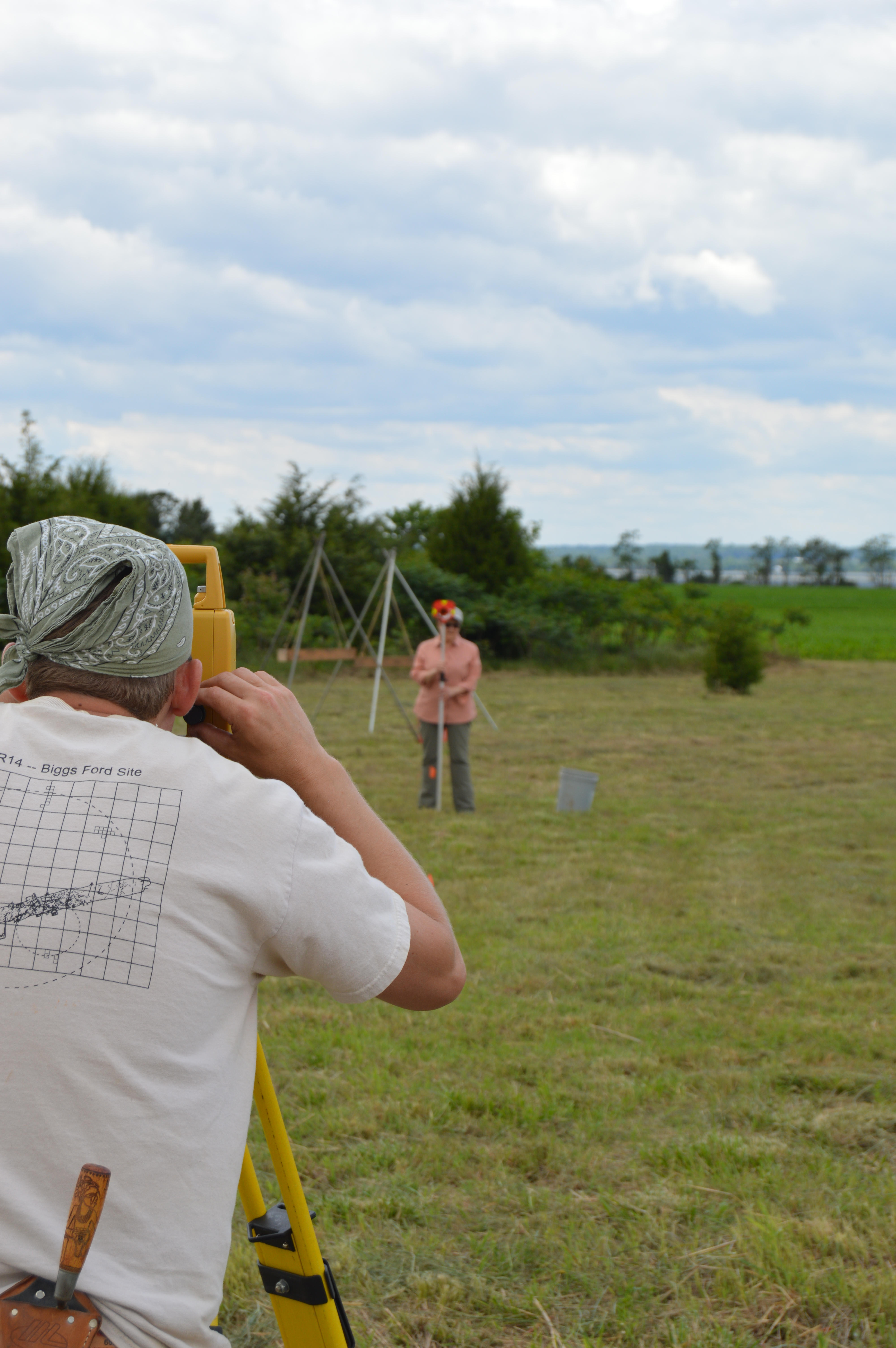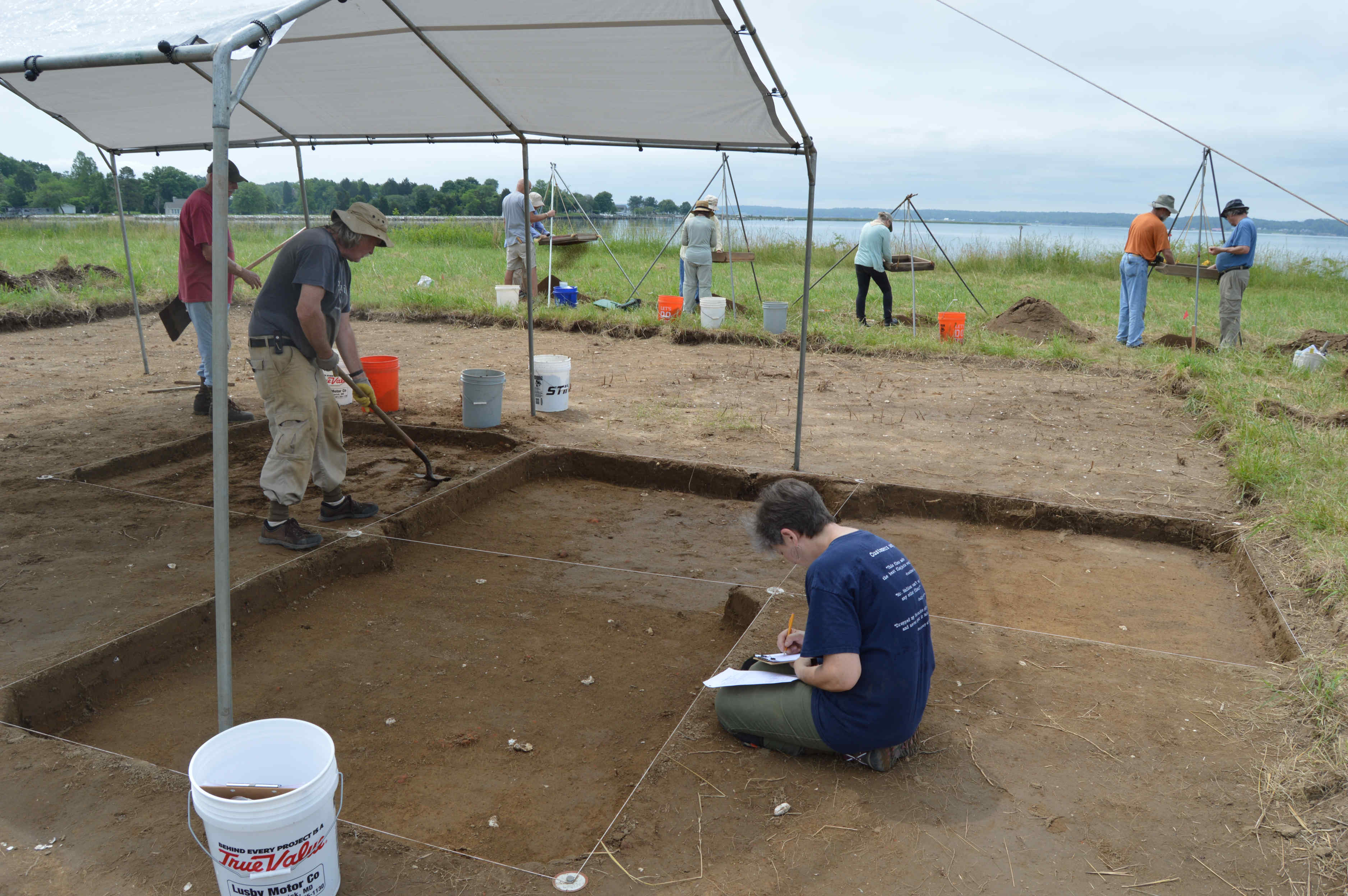- Details
The mission of the Legislative Watch Committee is to advise the Council on legislative activity, appropriations, and changes to existing laws and regulations that influence the field of archeology. In certain circumstances, the Council (or its Board) may decided to take collective action and in others it may simply alert membership to take individual action by contacting elected officials.
Committee Chair: Dave Gadsby
Committee Members: Jeanne Ward and Lyle Torp
Recent Actions by the Society for American Archaeology are often posted on their twitter feed, which is available below. Members of CfMA, who also belong to SAA can contact their elected officials at https://www.saa.org/government-affairs/take-action
- Details
A History
On October 7th, 2011, the Council for Maryland Archeology (CfMA) sponsored A Symposium to Discuss Improving the Practice of Archeology in Maryland at the University of Maryland at College Park. The first goal was to elicit the varying perspectives from archeologists working in academia, CRM, and the public sector on a wide range of topics so we could gauge the state of the profession after several years of poor program funding, furloughs and layoffs, and other ill effects associated with the protracted economic downturn that began in 2007. The day-long symposium was attended by almost 70 archeologists from the CRM community, academia, and public agencies at the state and local levels. While the majority of archeologists attending were based in Maryland, the State Archeologist from the District of Columbia and several municipal archeologists from Virginia were in attendance.
 Opening remarks were presented by Paul Shackel of the University of Maryland and Paul Kreisa, President of CfMA. The first session of the symposium started with an overview of the profession from the varying perspectives of Julie King of St. Mary's College of Maryland, Don Creveling of the Prince George's County Parks and Recreation Department, and Tom Barrett of CRA. A lively discussion over the issues of professional qualifications, research and performance standards, and the issue of whether graduate students are adequately prepared for the job market. Interestingly, none of the discussants felt that there was much of a philosophical rift between academic, CRM, and public sectors of archeology. All of the panelists felt that, in Maryland at least, each of these sectors was relatively healthy and sufficiently funded. One topic that received considerable attention was whether ROPA had much relevance to the professional practice of archeology beyond professional standards and code of ethics. Even the academic archeologists were surprisingly well-informed about ROPA.
Opening remarks were presented by Paul Shackel of the University of Maryland and Paul Kreisa, President of CfMA. The first session of the symposium started with an overview of the profession from the varying perspectives of Julie King of St. Mary's College of Maryland, Don Creveling of the Prince George's County Parks and Recreation Department, and Tom Barrett of CRA. A lively discussion over the issues of professional qualifications, research and performance standards, and the issue of whether graduate students are adequately prepared for the job market. Interestingly, none of the discussants felt that there was much of a philosophical rift between academic, CRM, and public sectors of archeology. All of the panelists felt that, in Maryland at least, each of these sectors was relatively healthy and sufficiently funded. One topic that received considerable attention was whether ROPA had much relevance to the professional practice of archeology beyond professional standards and code of ethics. Even the academic archeologists were surprisingly well-informed about ROPA.
A question about how to shift the practice of archeology from something you can make a minimal living doing to something you can make a respectable living doing drew less consensus and seemed to be an area that would benefit from the collection of real data. While most of the attendees seemed to feel that they were making a respectable living as an archeologist, the attendees were largely comprised of the more senior side of the archeological spectrum. Several new PhDs expressed concern that academic positions would not become available for them since universities were able to procure instructors from a large pool of qualified archeologists working outside of academia. A large number of archeologists who make their living in CRM or the public sector also teach classes at universities and community colleges. The one area that seemed to stymie many of the participants was the issue of maintaining a qualified labor force. Academic and public programs tend to use students and volunteers, respectively, as labor for fieldwork. The CRM sector, however, has generally relied on a roaming band of experienced field technicians that are employed for short durations. The pool of field technicians seems to become smaller and smaller, presumably as a consequence of the lack of work for these people over the past few years due to the poor economy.
The second session focused broadly on how we do archeology, and included discussions on everything from field methodologies, laboratory methods, analytical techniques, dissemination of data to other professionals, and promoting archeology to the public. The panelists for this session included Paul Kreisa of Greenhorne & O’Mara, April Fehr of the Maryland State Highway Administration, and Mike Lucas of the Prince George’s County Parks Department. One major facet of this discussion was a general consensus that Maryland’s Standards and Guidelines for archeological projects, which was written in 1994, needs to be updated. There was some discussion on the role of stakeholders in directing archeological inquiry. A significant component of the discussion focused on the issue of public support for archeology and how this “goodwill” can be translated to better funding for archeology programs.
Charlie Hall, Maryland's State Terrestrial Archeologist, provided the keynote speech at the luncheon. Charlie gave a rather upbeat message about the state of archeology in Maryland, which he attributed to the broad range of resources within the state that have received attention over the past few years, including the current boost in interest associated with the War of 1812 bicentennial and the sesquicentennial commemoration of the Civil War.
While the second session focused on the methods that we use to gather, interpret, and disseminate data, the third session focused on the issue of archeological significance, specifically, a discussion of the various theoretical issues associated with developing more rigorous and well-planned research designs. Panelists for this session were Matt Palus of The Ottery Group, Jennifer Stabler of the Maryland National Park and Planning Commission, and Dixie Henry of the Maryland Historical Trust. The goal for this session was to discuss how we broadly evaluate the significance of archeological resources under Criterion D, moving beyond treating significance largely in terms of artifact density or site size to improving the qualitative aspects of what we offer in our Phase II evaluations. Some other questions addressed included topics associated with evaluating the significance of plowzone sites and sites with a low-density of artifacts. The contribution of geomorphology to significance evaluations was also addressed.
The fourth session explored the broad range of technologies that have been used to enhance fieldwork or data evaluation, their appropriate uses and limitations, and a look at new developments that are on the horizon. Panelists included Maureen Kavanagh of the Maryland Historical Trust, Jim Gibb of Gibb Archaeological Consulting, Ed Chaney of the Maryland Archaeological Conservation Lab, and Matt McKnight of the Maryland Historical Trust. The session looked at things that we have added to our toolkit beyond the shovel and trowel: GIS, GPR, LiDAR, analytical software, and all the other technological advances that intersect with the day-to-day practice of archeology. Issues associated with uniform adoption of technology as well as cost barriers were addressed.
The final session, titled "Playing Nice," served as a follow-up to the first session and focused on a discussion of how the academic, CRM, and public sectors can work together more effectively to strengthen the practice and public image of archeology in Maryland. Tom Bodor of The Ottery Group, Mark Leone of the University of Maryland, and Julie Schablitsky of the Maryland State Highway Administration served as panelists. The session served as a nice conclusion to a long and exhausting day of discussion on the professional practice of archeology within Maryland.
While no major issues were resolved, the seminar certainly succeeded in bringing a broad spectrum of practicing archeologists together for a day of lively discussion about the state of the profession. Given the assault on cultural resource legislation over the past few years and the increasing use of archeology as an example of why environmental and cultural resource regulations should be scrapped, it is imperative that the professional community consider ways to increase the level of shared commitment to the future of the professional practice of archeology and strengthen the public appreciation of archeology to ensure future funding and support. Perhaps more importantly, it ensures that the professional community will be sensitive to the need to engage each other for the benefit of the broader professional community.
One of the tangible outgrowths of the symposium was a desire on the part of several particpants to create a series of "White Papers" dedicated to archeological best practices. These white papers are still under development, but will be posted here upon completion.
- Details
This committee represents the Council for Maryland Archeology as a sponsoring organization of the Certified Archeological Technician (CAT) Program. The committee functions to promote the interests of CfMA and report to the membership on CAT program initiatives and activities. The overall committee incorporates members of CfMA, the Archeological Society of Maryland and the Maryland Historical Trust.
Committee Chair: Tom McLaughlin
Committee Members: Katharine Fernstrom, Jim Gibb, Zachary Singer, Stephen Israel, Susan Langley, Annetta Schott
- Details
9/15/2022 - CfMA Expresses Concerns Over Baltimore Museum of Industry's Relationship with SalvageArc
9/15/2022 - CfMA Letter to the Baltimore Banner Concerning 8/19/2022 SalavageArc Article
9/6/2022 - CfMA Correspondence RE Lewes Dairy
7/29/2022 - Letter of Support for Herring Run Park Archaeological Survey
4/19/2022 - CfMA Speaks Out Against the Termination of Archaeologists by the Montpelier Foundation
6/28/2021 - Letter of Support for the ASM's 2022 Annual Field Session
3/23/2021 - Letter of Support for Calvert County Board's CLG Grant at Biscoe Gray Heritage Farm
- Details
The Certified Archeological Technician (or CAT) Program is a joint initiative of CfMA, the Archeological Society of Maryland (ASM), and the Maryland Historical Trust, which offers lay members of the ASM an extended course of study and the opportunity to obtain formal archeological field and laboratory training. CfMA is represented amongst the sponsoring organizations by the CAT Training Commitee. The committee functions to promote the interests of CfMA and report to the membership on CAT program initiatives and activities.
Beyond the work of the CAT Training Committee, several CfMA members serve as mentors to CAT candidates, while others offer training workshops and field opportunities to help candidates earn their required credits.
For more information on the CAT Program, or to see a listing of past CAT graduates visit the Archeological Society of Maryland webpage.
